
Ingegneria Sismica
Scope & Guideline
Connecting researchers to enhance earthquake engineering insights.
Introduction
Aims and Scopes
- Seismic Performance Analysis:
Research in this area involves evaluating the seismic behavior of various structural systems, including steel frames, concrete structures, and innovative damping systems, to enhance their performance during earthquakes. - Innovative Seismic Isolation Techniques:
The journal publishes studies on new seismic isolation methods, including the development and testing of various isolators and dampers, aimed at reducing seismic forces on structures. - Structural Health Monitoring and Assessment:
This scope includes the application of advanced monitoring techniques and damage assessment methods to evaluate the condition and performance of structures post-earthquake. - Numerical and Experimental Modeling:
The use of finite element modeling, parametric studies, and experimental setups to simulate and analyze the seismic response of structures is a key focus area. - Multi-Hazard Analysis:
Research that combines seismic analysis with other hazards (such as fire or flood) to assess the robustness and reliability of structures under multiple threats.
Trending and Emerging
- Resilience and Energy Dissipation Innovations:
There is an increasing emphasis on developing and analyzing new energy-dissipating systems and resilience strategies for structures to withstand seismic events more effectively. - Advanced Computational Techniques:
The integration of advanced computational methods, including machine learning and artificial intelligence for seismic analysis and design optimization, is becoming a prominent theme. - Sustainability in Seismic Design:
Research exploring sustainable materials and methods that reduce environmental impact while enhancing seismic performance is on the rise, indicating a growing intersection between sustainability and engineering. - Performance-Based Design Approaches:
A shift towards performance-based design methodologies is evident, focusing on achieving specific performance objectives during seismic events rather than merely meeting code requirements.
Declining or Waning
- Traditional Seismic Assessment Methods:
There has been a noticeable decrease in publications focusing solely on conventional seismic assessment techniques, as researchers are increasingly leaning towards innovative and integrated approaches. - Static Analysis Approaches:
The use of traditional static analysis methods is waning in favor of more dynamic and advanced simulation techniques, reflecting a broader trend towards comprehensive modeling of seismic impacts. - Use of Conventional Materials in Seismic Design:
Research centered on conventional materials (like standard reinforced concrete) is declining, as new materials and systems that enhance seismic performance gain traction.
Similar Journals

Italian Geotechnical Journal-Rivista Italiana di Geotecnica
Innovative Insights for the Future of Geotechnical Engineering.Italian Geotechnical Journal-Rivista Italiana di Geotecnica, published by PATRON EDITORE S R L, is a rigorously peer-reviewed journal dedicated to advancing the field of geotechnical engineering and engineering geology. With a history dating back to 1976 and an active publication span from 2011 to 2024, the journal provides a vital platform for researchers and practitioners to disseminate innovative findings and methodologies in the field. Although it currently holds a Q4 category ranking in Geotechnical Engineering and Engineering Geology, the journal is committed to maintaining high academic standards and quality of publication. Its Scopus ranking places it within the 29th percentile of Earth and Planetary Sciences, indicating its significance among scholarly publications. The Italian Geotechnical Journal serves not only as a resource for academic inquiry but also as an essential tool for professionals seeking to stay abreast of the latest developments and applications in geotechnical research. This journal is essential for students and researchers aiming to deepen their knowledge and contribute to ongoing discourse in geotechnics.
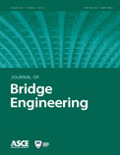
Journal of Bridge Engineering
Elevating Standards in Civil and Structural EngineeringThe Journal of Bridge Engineering, published by the ASCE - American Society of Civil Engineers, is a premier academic journal dedicated to the specialized field of bridge engineering and structural design. With a strong commitment to advancing knowledge from 1996 to 2024, this journal is recognized for its excellence, holding a prestigious Q1 ranking in both the Building and Construction and Civil and Structural Engineering categories according to the latest 2023 metrics. The journal's ISSN 1084-0702 and E-ISSN 1943-5592 signify its commitment to scholarly communication in a digital age. While it does not currently follow an open access model, the Journal of Bridge Engineering significantly impacts the engineering community, appealing to researchers, professionals, and students who seek cutting-edge research and innovative practices in bridge engineering. Its current rankings on Scopus place it among the top journals in its field, reinforcing its role as a critical resource for advancing the state of the art in bridge design, maintenance, and sustainability.
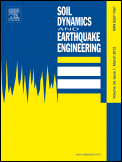
SOIL DYNAMICS AND EARTHQUAKE ENGINEERING
Innovating Solutions for Earthquake Challenges through Soil ScienceSOIL DYNAMICS AND EARTHQUAKE ENGINEERING is a premier academic journal published by ELSEVIER SCI LTD, focusing on the intersection of civil and structural engineering, geotechnical engineering, and soil science. Since its inception in 1986, the journal has established itself as a critical resource for advancing knowledge in these fields over nearly four decades, with a remarkable Q1 ranking in 2023 across multiple categories, including Civil and Structural Engineering, Geotechnical Engineering, and Soil Science. The journal’s impactful research, reflected in its high Scopus ranks, serves as a vital reference for both professionals and academics dedicated to understanding soil dynamics and mitigating earthquake hazards. Although it currently does not offer open access, the journal's rigorous peer-review process ensures that published articles provide substantial contributions to the understanding of soil behavior under seismic conditions. Whether you are a researcher, a practitioner, or a student, SOIL DYNAMICS AND EARTHQUAKE ENGINEERING offers essential insights and innovative methodologies pivotal for advancing your work in soil dynamics and earthquake engineering.
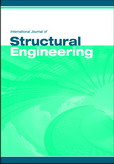
International Journal of Structural Engineering
Exploring Solutions for Modern Engineering ChallengesInternational Journal of Structural Engineering, published by InderScience Enterprises Ltd, has established itself as a vital resource in the field of civil and structural engineering. With an ISSN of 1758-7328 and an E-ISSN of 1758-7336, this journal is dedicated to disseminating high-quality research that addresses contemporary challenges and innovations in structural engineering. The journal operates under a rigorous peer-review process, ensuring that only the most impactful and relevant studies are shared with the global community. Since its inception in 2009, the journal has been recognized for its contributions, earning a ranking in Q3 for civil and structural engineering under the 2023 Category Quartiles and occupying the 40th percentile in Scopus rankings. While currently not an open-access journal, it provides access to a wide array of original papers, reviews, and case studies that are crucial for fostering academic discourse and supporting the ongoing education of professionals and students alike. As it continues to expand its reach until 2024, the International Journal of Structural Engineering remains a cornerstone for those seeking to enhance their knowledge and practice in the dynamic realm of structural engineering.
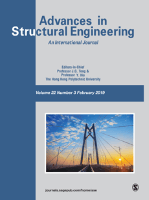
ADVANCES IN STRUCTURAL ENGINEERING
Building Tomorrow: Research That Shapes InfrastructureADVANCES IN STRUCTURAL ENGINEERING, published by SAGE PUBLICATIONS INC, is a leading journal dedicated to the advancement of knowledge in the fields of Building and Construction, as well as Civil and Structural Engineering. With a solid impact factor and a commendable Scopus ranking (Rank #60 in Building and Construction, Rank #105 in Civil and Structural Engineering), this journal stands at the forefront of academic research, providing a platform for high-quality articles that contribute significantly to the discipline. Covering a range of topics from innovative construction techniques to sustainable engineering practices, the journal aims to foster collaborative dialogue among researchers, industry professionals, and students alike. As of 2023, it boasts impressive category quartiles, ranking Q1 in Building and Construction and Q2 in Civil and Structural Engineering. ADVANCES IN STRUCTURAL ENGINEERING is a vital resource for those looking to stay abreast of emerging trends and groundbreaking developments in structural engineering, promoting an environment of continuous learning and application of best practices. With a convergence of research from 1999 to 2024, the journal not only emphasizes theoretical frameworks but also bridges the gap between academia and practical application in engineering projects.

Earthquake Science
Innovating Understanding of Earth’s ShakingEarthquake Science is a prominent open access journal that has been serving the scientific community since its inception in 2009, published by KEAI PUBLISHING LTD. With an ISSN of 1674-4519 and an E-ISSN of 1867-8777, this journal has established itself as a significant platform for the dissemination of research in the fields of geology, geophysics, and geotechnical engineering, evident from its Q2 ranking in 2023 across these categories. Based in China, Earthquake Science aims to facilitate knowledge sharing and foster interdisciplinary collaboration by publishing a range of high-quality articles, reviews, and research papers demonstrating advancements in understanding seismic activity and its impacts. Its commitment to open access since 2015 ensures that valuable insights are available to researchers, professionals, and students globally, thereby supporting critical inquiries into earthquake mechanisms and risk management strategies. Explore the latest findings and contribute to the ongoing conversation in the evolving landscape of earthquake science.
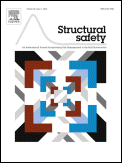
STRUCTURAL SAFETY
Exploring the forefront of structural safety research.STRUCTURAL SAFETY is a premier journal dedicated to advancing the field of engineering with a focus on safety, risk, reliability, and quality in structural analysis and design. Published by Elsevier, this esteemed journal boasts an impressive Impact Factor and ranks in the top quartiles (Q1) of key categories including Building and Construction, Civil and Structural Engineering, and Safety, Risk, Reliability, and Quality. With a significant history spanning from 1982 to 2024, STRUCTURAL SAFETY fosters scholarly exchange among researchers, professionals, and students by publishing innovative and high-quality research articles that contribute to the safety and resilience of engineered structures. The journal operates without open access barriers, ensuring a broad audience can access invaluable insights in the engineering realm. Its distinguished Scopus rankings further underscore its impactful role within the academic community, making it an essential resource for anyone invested in the discipline of structural safety.

Earthquakes and Structures
Pioneering research to withstand nature's tremors.Earthquakes and Structures is a prestigious academic journal published by TECHNO-PRESS, dedicated to the field of Civil and Structural Engineering. Since its inception in 2010, this journal has provided a platform for innovative research and practical applications, addressing critical challenges related to seismic activities and their impact on infrastructure. With an ISSN of 2092-7614 and an E-ISSN of 2092-7622, it is indexed in top databases, reflecting its commitment to quality and relevance, as indicated by its Q3 quartile ranking in 2023. The journal encompasses a wide range of topics, from theoretical investigations to real-world case studies, appealing to researchers, professionals, and students alike. By fostering interdisciplinary collaboration and disseminating cutting-edge findings, Earthquakes and Structures plays an essential role in advancing knowledge and practices in earthquake engineering, enhancing global resilience against seismic threats.
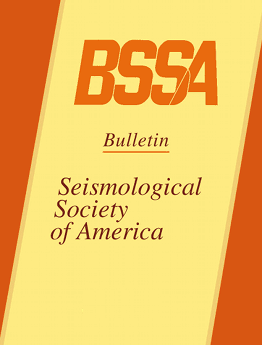
BULLETIN OF THE SEISMOLOGICAL SOCIETY OF AMERICA
Unveiling the forces that shape our planet.BULLETIN OF THE SEISMOLOGICAL SOCIETY OF AMERICA is a premier journal published by the Seismological Society of America, dedicated to advancing research in the field of seismology and related disciplines. Since its inception in 1969, this journal has garnered significant recognition, evidenced by its impressive Q1 category rankings in both Geochemistry and Petrology, and Geophysics, alongside a solid standing within the Earth and Planetary Sciences Scopus rankings. The journal is esteemed for publishing high-quality, peer-reviewed articles that contribute to the understanding of seismic activities and their implications on a global scale. With a commitment to facilitating the dissemination of critical findings, it serves as an essential resource for researchers, professionals, and students alike who are engaged in the dynamic and vital study of the Earth’s processes. While the journal is not Open Access, it continues to provide vital insights and methodologies that shape the future of geophysical research.
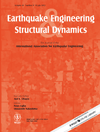
EARTHQUAKE ENGINEERING & STRUCTURAL DYNAMICS
Uncovering new dimensions in structural dynamics.EARTHQUAKE ENGINEERING & STRUCTURAL DYNAMICS, published by Wiley, is a leading journal recognized for its significant contributions to the domains of civil and structural engineering, as well as geotechnical engineering and engineering geology. With an impressive Q1 ranking in multiple categories, including Civil and Structural Engineering, and an esteemed Scopus ranking placing it in the 82nd percentile, the journal serves as a premier platform for disseminating pioneering research and innovative methodologies related to earthquake engineering and dynamic structural analysis. Established in 1972, this journal boasts a comprehensive coverage of topics from theoretical developments to practical applications, making it an essential resource for researchers, industry professionals, and students eager to expand their understanding of seismic safety and structural resilience. Though it does not offer open access, the journal continues to be a cornerstone for scholarly communication within the earthquake engineering community, advancing knowledge that shapes better engineering practices worldwide.